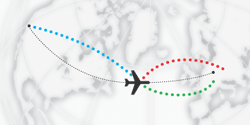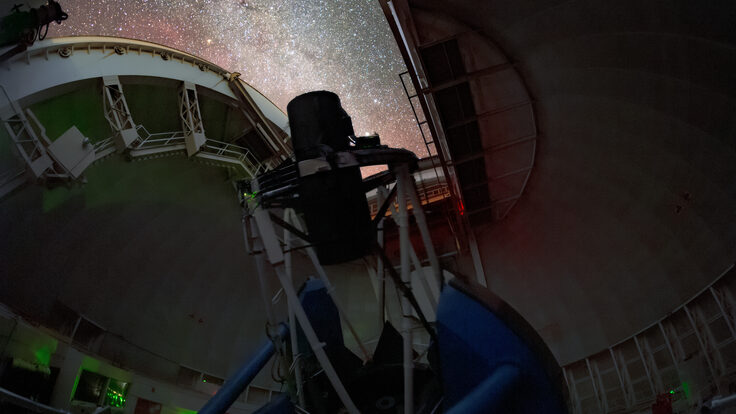Collaborating at 40,000 feet
 Illustration: Sandbox Studio |
Phillipe Galvez wasn't even supposed to be on the flight. After a delay of his original flight, from Los Angeles to Frankfurt, he was placed on a flight to Munich. While watching the airline's mundane beginning-of-flight video, Galvez and others saw an advertisement for wireless Internet connectivity available throughout the plane.
"Everybody immediately jumped out of their seats to get their laptops," recalls Caltech's Galvez. "After I paid my $29.95, the first thing I did was instant-message my wife and hook up my Webcam so the kids could say 'hi' to papa on the plane."
Next Galvez visited the virtual headquarters of Virtual Room Videoconferencing System (VRVS), a Web-oriented system first developed for the high-energy and nuclear physics communities. Collaborators from California, Geneva, and Slovakia were rather surprised to see Galvez appear on their screens, and his seatmates were astonished to see him get out his headphones and webcam and start talking to people on two continents, in the first VRVS videoconference from 40,000 feet.
"The people near me looked at me as if I came from Mars. It didn't help that I got out my camera and started taking pictures to immortalize the event," says Galvez, who has since learned that not all flights, including his original flight from Los Angeles to Frankfurt, carry the technology. On your next transatlantic or transpacific flight, check for the availability of this service: You might be able to make that videoconference after all—with the blessing of your seatmates and enough battery power.
Katie Yurkewicz, Science Grid This Week
Click here to download the pdf version of this article.






